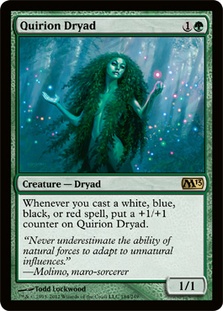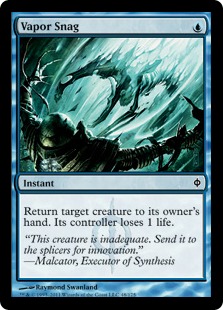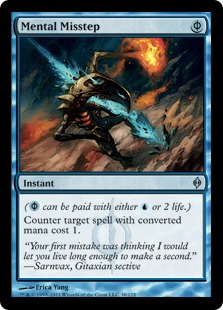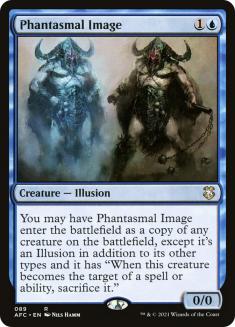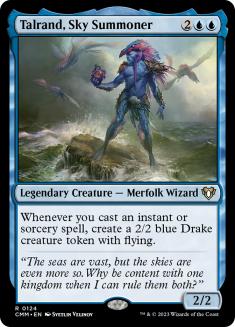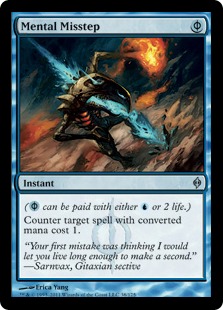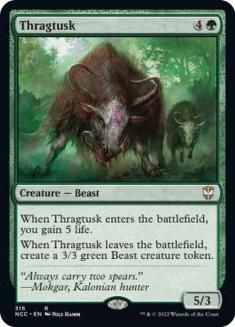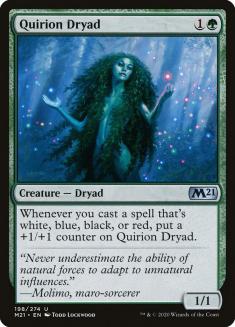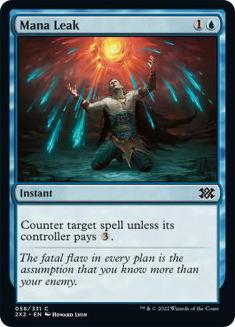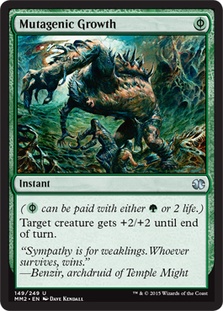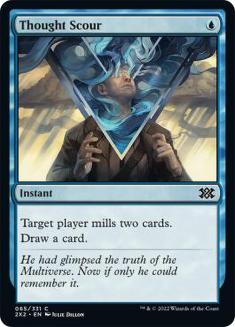Love is a fire. But whether it is going to warm your heart or burn down your house, you can never tell.
–Joan Crawford
It is no secret that my love for this card burns hot. There have been few cards over the years that boil my blood like Quirion Dryad. I love getting rewarded for casting spells. I love casting efficient spells. I love being faster and more powerful than my opponent, and Quirion Dryad helps facilitate this infatuation.
Over the last few years, every time Wizards decided to (re)print it, I struggled for a few weeks to create a concoction that could do this little monster justice. This time around isn’t any different, and I’ve spent the last few days just brewing different Delver variations with Quirion Dryad.
So why am I putting so much effort into making Quirion Dryad good again?
Some of you may have forgotten, but there was a time when Quirion Dryad was one of the best creatures in Extended. And I don’t mean Extended like you think I mean Extended. I mean old Extended. I mean like back in the days when dual lands were legal just because. I’m talking about Miracle Grow! That was a deck that used Gush for value. For value! Miracle Grow is one of my favorite decks of all time, and I never even got to play with it. I just watched helplessly as my opponents beat me senseless, but that was a long time ago and I was a much different player. Slowly, through all of the beatings, I absorbed concepts like tempo, board advantage, and getting every inch out of every spell and land you play.
As you can see, we used to play hard. Extended was no joke, and it functioned similarly to how Legacy plays today.
The printing of Tarmogoyf had a little bit to do with the end of Quirion Dryad’s day in the sun, but most of the blame lies with the constant rotation schedule that Extended used to follow. This helped eliminate a lot of the better card draw spells from the format and ultimately slowed Extended down to a crawl. Without cards like Force of Will, Daze, and Brainstorm (sound familiar?) in the format, Extended began to mold into a much different animal. Cards like Quirion Dryad became much worse when you didn’t have cheap protection and decks like The Rock became powerful forces. In what was once the greatest format I’d ever played, we were left with awful midrange decks and the occasional overpowered combo deck (until it was banned).
But Legacy eventually became what Extended once was, at least for me. I could play with Brainstorm again. I could cast Force of Will to protect myself from impossibly fast combo decks. I could even punish people for their greedy mana bases with Wasteland. Legacy let me do everything that I’d ever wanted to do while playing Magic. But somewhere, amidst the Tarmogoyfs and Wild Nacatls, even I forgot about Quirion Dryad.
With Phyrexian Mana spells at our disposal and a huge incentive to play cheap instants and sorceries, there’s never been a better Standard format for Quirion Dryad to shine. So what’s been holding her back?
Ah, yes. Our greatest weapon and our greatest threat. So how can we go about solving this problem? Vapor Snag is incredibly powerful against us, but we’re still only spending two mana for our creature, right? Well, the two mana initial investment isn’t the rough part. You will spend a lot of time and effort over subsequent turns to pump Quirion Dryad in order to afflict more damage. Usually, this will leave your hand depleted, and it will be increasingly more difficult to grow it a second time.
But we aren’t spending our entire turn 4 tapping out for some midrange threat. While other Delver decks have Restoration Angels and Hero of Bladeholds, our fatty boom-boom costs half the mana. If we expect our opponent has Vapor Snag, we don’t have to move all-in on our first time around. We can hold back a little, saving some of our gas for later. Besides, we should also be presenting our opponent with a multitude of other threats that need to be dealt with, and they only have so many Vapor Snags.
One of the things I love most about Quirion Dryad is her ability to apply such an exorbitant amount of pressure in such a small amount of time. During one of my more recent games against a U/W Delver deck, I had two flipped Delvers and two 4/4 Quirion Dryads when untapping for my fourth turn and had also killed two of his Delvers with Gut Shots. While this is definitely a “nut draw,” it is not rare to have a 5/5 or 6/6 Quirion Dryad attacking on turn 3!
Taking into consideration the fact that Dryad is a little vulnerable to Vapor Snag, we can’t leave ourselves naked. We need protection. We need to find ways to keep her in play long enough to get in at least a few attacks and ultimately stop any of the cheap removal that the other decks are going to be throwing at us. The answer:
My favorite mistress. The card that broke Legacy’s back. Mental Misstep has been in countless iterations of Delver that I’ve played over the last year, always finding its way back into my heart to keep the other versions of Delver in check. Always helping to keep my threats alive while simultaneously stifling the development of other aggro decks.
For a while, Mental Misstep just wasn’t that good. Sure, nearly every deck had a target, but those targets weren’t always relevant or at least relevant enough to waste slots in your deck. Now, it seems like there are enough flavors of Delver to warrant the inclusion, and it also has the added benefit of slowing down the rest of the aggro and midrange decks in the format. Mental Misstep gives your deck a lot of breathing room and is easily the glue that keeps Quirion Dryad in the deck.
While Quirion Dryad isn’t the best creature in the Delver mirrors thanks to Vapor Snag, I do think that Dryad is the best creature for a Delver deck against basically every other deck in the field.
Let me reiterate that statement:
Quirion Dryad is the best threat that Delver decks can present to non-Delver opponents.
Let that sink in for a moment, and then I’m going to tell you why.
…
People always remember that time they lost to a Delver of Secrets that flipped on turn 2. They didn’t even have to cast Ponder! I get it. Delver is a great card, and people don’t really like losing to it. Delver is also the most vulnerable creature in the entire deck by far, but that is to be expected. After all, it only costs one mana.
So what if you could play a threat that matches Delver on power level, efficiency, and is almost never vulnerable to a Bonfire of the Damned? What if this threat is only two mana? What if this threat could grow larger than any other creature in the opponent’s deck in just a single turn!? With Phyrexian Mana spells, that isn’t just a possibility—it is a probability. Thragtusk never looked so small!
Now they’re going to be talking about how their opponent cast Quirion Dryad, used Gut Shot on their Birds of Paradise, and attacked for six while using Vapor Snag to keep them on the back foot!
The majority of the removal in Standard is situational and/or conditional. Cards like Gut Shot and Tragic Slip are used more often than “hard” removal like Doom Blade or Go for the Throat due to their efficiency. This is mostly thanks to the existence of Delver of Secrets, since it is very dangerous to play removal that costs more than the threats being presented. What this means for us is that Delver of Secrets will usually hit the bin, but the same shouldn’t be said for Quirion Dryad.
I’ve been working on this deck for the last few days and even took it to a ninth place finish in the last Magic Online PTQ, missing out on Top 8 by tiebreakers. However, I put up an impressive 5-1 record against U/W Delver in the tournament and caught my final loss to Zombie Pod in the last round of Swiss thanks to some shenanigans from Phyrexian Metamorph, Geralf’s Messenger, and Birthing Pod.
I’ve gone on to play with the deck in multiple Daily Events, and very few of my matches have felt relatively close. While the Zombies matchup could use a little work, the deck isn’t nearly as popular as it was just a few weeks ago. This matchup will often come down to who has a better draw, but their nut draw is usually much better than yours. Few Delver decks can beat the triple one-drop draw followed by multiple Geralf’s Messengers, since no amount of Celestial Purge can really save you. U/G Delver is strong, and you should be prepared.
With that said, here is my current U/G Delver list:
Creatures (17)
Lands (8)
Spells (35)

Today I’m going to do something a little different than normal. Instead of going over each matchup in Standard, giving you just a small amount of information on each, I’m going to talk about how to combat the different flavors of Delver. Since there are so many variations on the format’s “best deck,” can we even call it that? Sure, they all have a lot in common and some feel like a rehashing, but it is important to note that each version plays out differently so you should play against them differently.
For starters, it is good to be able to recognize which version of Delver you are facing off against. There are a few key indicators, and you should use those to help figure out what you should do in that particular matchup. Along with these indicators, I will tell you what I know about each matchup and what your plan should be against each of them:
Geist of Saint Traft
This version will often utilize Restoration Angel as a backup plan and will almost certainly have some type of equipment. Most lists run Runechanter’s Pike thanks to its efficiency as this will also allow them to skimp on lands, generally running 19-20. They are much more aggressive than most Delver decks because of Geist of Saint Traft. It is a bad decision to focus on being the aggro deck in this particular matchup, since their threats can be more dangerous than yours and harder to deal with.
Their Key Cards: Geist of Saint Traft, Restoration Angel
Your Key Cards: Gut Shot, Phantasmal Image, Talrand, Sky Summoner
Plan to Enact: Be the control deck. You have so many answers to their early threats that the games tend to go on for quite a while. Thragtusk acts as an awesome late-game threat that they can rarely deal with, and you will usually have enough time to hit your land drops. Even if they have Runechanter’s Pike, you can usually keep most of their threats in check long enough to stick a Talrand and start dominating the board.
Sideboard Plan
In:
Out:
Augur of Bolas
While this one can be a bit trickier, most versions of Delver that involve Augur of Bolas are generally less threatening. They tend to focus more on Talrand and Runechanter’s Pike and less on raw aggression like Geist of Saint Traft. They try to play the mirrors for the long game, and they mostly win the games that do go long. Focus on trying to kill them quickly with Delver of Secrets and Quirion Dryad, using Mental Misstep to protect them.
Their Key Cards: Talrand, Sky Summoner
Your Key Cards: Mental Misstep, Delver of Secrets, Quirion Dryad
Plan to Enact: Be the aggro deck. Given enough time, this deck will dominate the board with Talrand. While you have four of your own, they can’t really handle a threat like Quirion Dryad without drawing a lot of Vapor Snags. The problem for them is that Vapor Snag is actively bad on defense, which a lot of people don’t realize. Vapor Snag is only good when you’re hindering your opponent’s board development while also applying pressure.
Sideboard Plan
In:
Out:
Inkmoth Nexus
While this version doesn’t crop up much, it tends to be much more “all-in” on Cavern of Souls to protect its Talrand. Your Mana Leaks will almost always be useless, but the truth is that this deck is just another variation on the Augur of Bolas version. Runechanter’s Pike is much stronger in this version and will occasionally be accompanied by Invisible Stalker. In those games, it will just come down to a race since your opponent doesn’t really want to interact with you.
Their Key Cards: Runechanter’s Pike, Invisible Stalker, Talrand, Sky Summoner
Your Key Cards: Mental Misstep, Delver of Secrets, Quirion Dryad
Plan to Enact: Aggro, same as Augur of Bolas, but much more of a racing scenario in a lot of situations. The decks are very similar, though this one is much more likely to be playing Invisible Stalker.
Sideboard Plan
Same as against Augur of Bolas.
Sulfur Falls
These versions of Delver are generally much more controlling, and tend to rely on Bonfire of the Damned to do a lot of the dirty work. We have Quirion Dryad to keep them on their toes and Bonfire of the Damned will be much worse against us than the normal versions of Delver, but your Talrands are significantly worse as a result. Since it can be relatively difficult to protect an early Quirion Dryad from Pillar of Flame as well as mid game Bonfires to keep your Talrands in check, these versions tend to have a slightly better chance than the usual “Mono-Blue Wizards” variants.
Their Key Cards: Talrand, Sky Summoner, Pillar of Flame, Bonfire of the Damned
Your Key Cards: Mutagenic Growth, Mental Misstep, Quirion Dryad
Plan to Enact: Aggro. These versions will be much more removal heavy than normal Delver decks but will still be a bit worse for the wear when facing down Quirion Dryad. They will have Vapor Snags, but you should present them with plenty of targets. Talrand is quite annoying from their end and not quite as good for you since they have access to Bonfire. Use Mutagenic Growth wisely, saving the threats that you deem most valuable at any given time.
Sideboarding
In:
Out:
Quirion Dryad
In the mirror, it is hard to say what is important and what you should do. I haven’t played any mirrors yet, but I think that this version might pick up a bit in popularity. I’ve had a ton of people ask me about it already, if that is any indicator, but a lot of the same principles hold true for this matchup. I don’t think you should side out Quirion Dryad since I don’t think Thragtusk is good enough against the mirror. I think the games will almost always come down to tempo because you don’t have a hard answer to Quirion Dryad like you have a hard answer to Geist of Saint Traft.
I expect that the games that go long will be decided by Talrand.
The Key Cards: Delver of Secrets, Quirion Dryad, Talrand, Sky Summoner
Plan to Enact: Depends on your draw, but I would generally prefer aggro. Blocking with Quirion Dryad is a losing prospect!
Sideboarding
In:
Out:
…
As you can probably see, there is a bit of a trend going on. Mana Leak is pretty bad in the Delver matchups, and Mental Misstep is very important. Talrand Delver decks tend to be much slower and usually try to grind you out of the game. Don’t give them that opportunity by swarming them with cheap threats. If they are the slower of the two decks, then you have to be the aggro deck. If your draw doesn’t suit that particular niche, then focus on maximizing your chances to win the long game. Stick a Talrand and try to protect it. Unfortunately, this isn’t always possible thanks to Phantasmal Image, but you can usually get a ton of value out of your Talrand before it dies.
The only Delver matchup where I would recommend becoming a control deck is the Geist of Saint Traft version. They’re much less resilient to your “answers” since Geist of Saint Traft doesn’t match up well with Phantasmal Image. Since you are the control deck, Quirion Dryad is your worst creature. It forces you to overcommit on spells in order to apply pressure, and that isn’t what you want to be doing. You want to be conservative, get maximum value out of everything you play, and find ways to make it to the late game so you can stick Talrand or Thragtusk and take over.
Of course, this little guide is specific to Delver matchups, but I feel like those are generally the most difficult. If you play with the deck enough, you should figure out most other matchups naturally. I think that the Delver “mirrors” are the hardest matchups to play since it is often difficult to figure out just what role you want to take, but that is almost entirely dependent on the makeup of each of your deck!
…
I’m really glad to be playing with Quirion Dryad again. I think the deck is very powerful, and Quirion Dryad gives you a lot of breathing room against decks that normally “smash” Delver. Where certain cards were once blowouts (Bonfire), now they’re just decent or even mediocre. I think that this particular suite of spells is best suited for defending against the format’s premier removal, and you will realize just how powerful the deck soon after picking it up.
There will be times where you keep sketchy hands and do nothing. There will be times where a hand seems strong, but you don’t draw a land and die. There is a steep learning curve with the deck, but getting over the hump comes with practice. Don’t give up on the deck. Keep playing with it, learn the ins and outs, and rediscover just how good Quirion Dryad can be.
I know I have, and I promise I won’t forget you this time, old friend.
Thanks for reading.
strong sad on Magic Online
Follow me @strong_sad on Twitter

